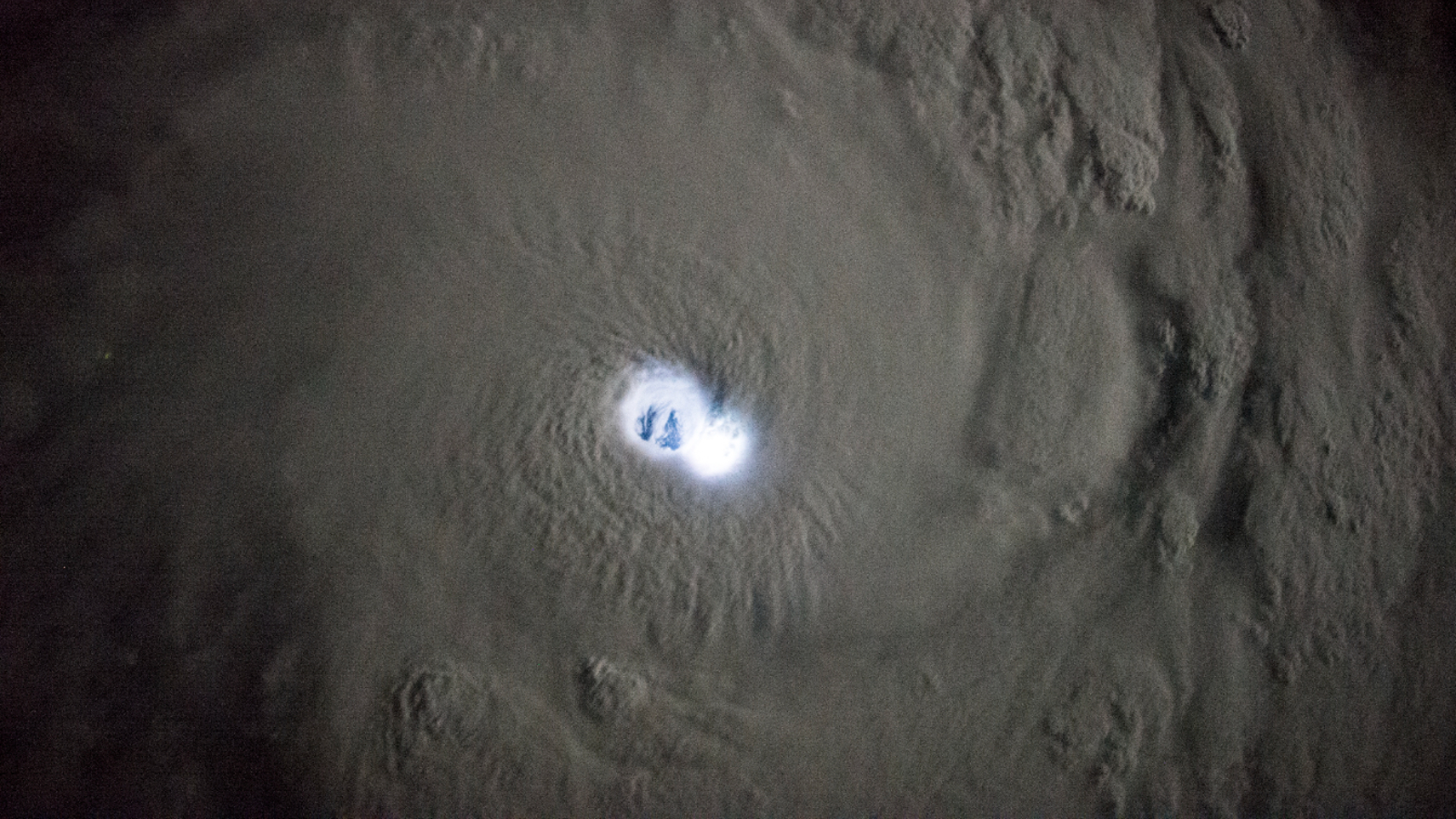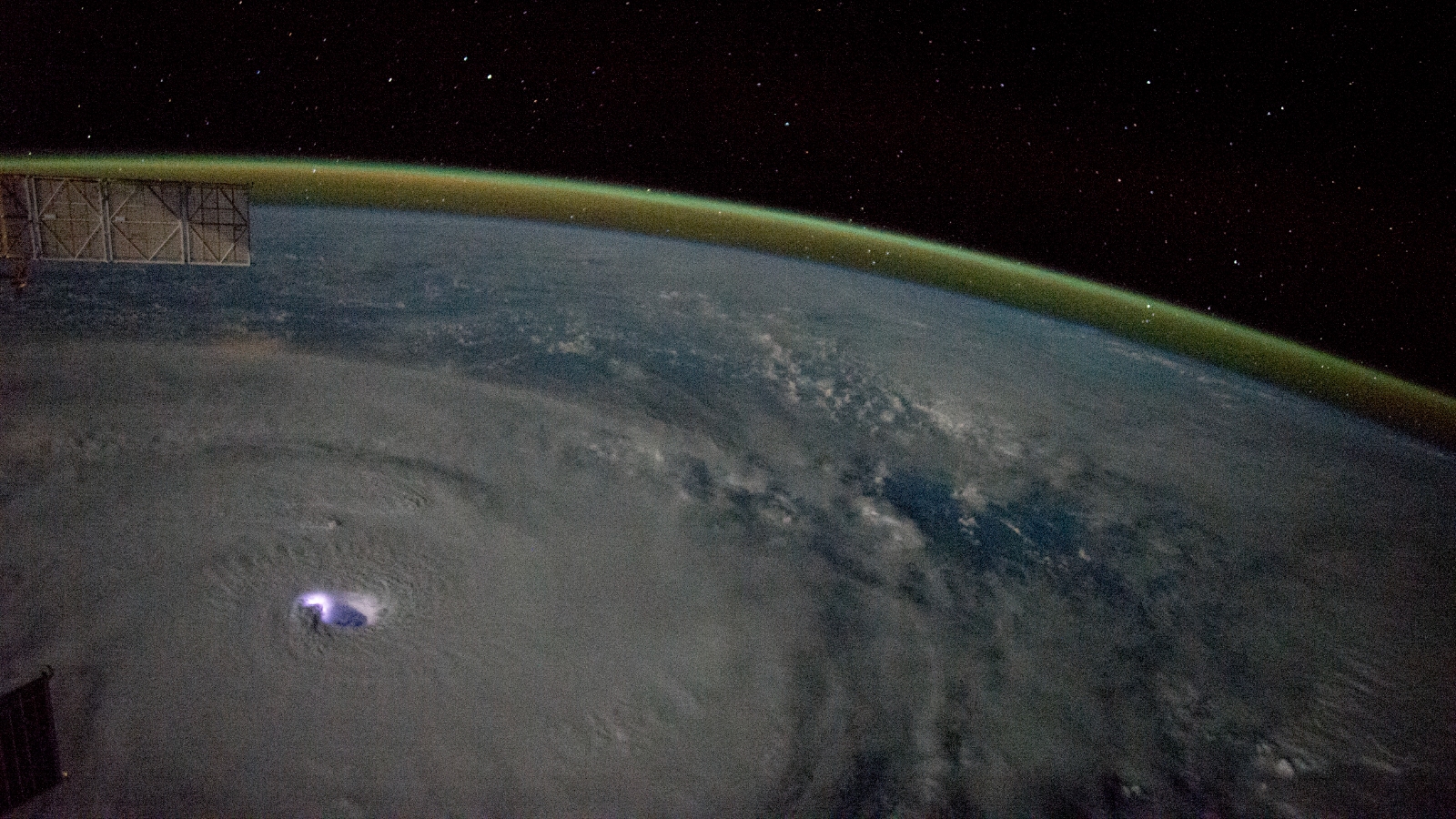
Where is it? The Indian Ocean, off the coast of Madagascar
What's in the photos? The eye of tropical cyclone Bansi illuminated by lightning
Who took the photos? Unnamed astronauts on board the International Space Station (ISS)
When were they taken? Jan. 12, 2015
Two striking photos captured by astronauts on board the ISS show the eye of the tropical cyclone Bansi as it was illuminated by lightning — twice in just a couple of minutes.
Bansi first reached named-storm status on Jan. 11, 2015, shortly after it formed off the coast of Madagascar. The storm raged for around eight days, moving from Madagascar into the Indian Ocean, where it made landfall in Mauritius before eventually dissipating as it headed back toward the French island Réunion.
Bansi peaked at Category 4, with a maximum wind speed of around 115 mph (185 km/h), according to NASA's Earth Observatory. On Jan. 13, the eye of the storm measured around 12 miles (19 kilometers) across, NASA's Goddard Space Flight Center reported at the time.
On Jan. 12, the ISS passed over the cyclone's eye during an intense bout of lightning, providing astronauts with a unique photography opportunity. Astronauts saw the storm's eye light up at least twice in just a few minutes: The first photo (above) was taken at 21:04:17 GMT, and the second image (below) was snapped at 21:05:53 GMT.
Related: See the best images of Earth from space

Clear images of flashing lightning are rarely taken from orbit around Earth because the phenomenon is normally obscured by cloud cover. However, the spectacular sight can be seen at the heart of tropical storms or sometimes from within holes in the clouds.
One of the most famous photos of lightning taken from space was captured in February 2019, when an ISS astronaut snapped a photo of an upward-shooting blue jet that discharged from the top of a thunderstorm over the central Pacific Ocean.
In the second image of Bansi, a soft golden light can be seen shining above the curvature of Earth. This is airglow, an aurora-like phenomenon that occurs when gases such as oxygen and nitrogen are excited by charged particles and ultraviolet radiation from the sun.
Airglow is most commonly spotted in and around solar maximum — the most active phase of the sun's roughly 11-year solar cycle. The last solar maximum peaked around 2014, shortly before Bansi formed. We are now in the midst of another solar maximum, which has provided ISS astronauts with additional opportunities to photograph these ethereal light shows.







